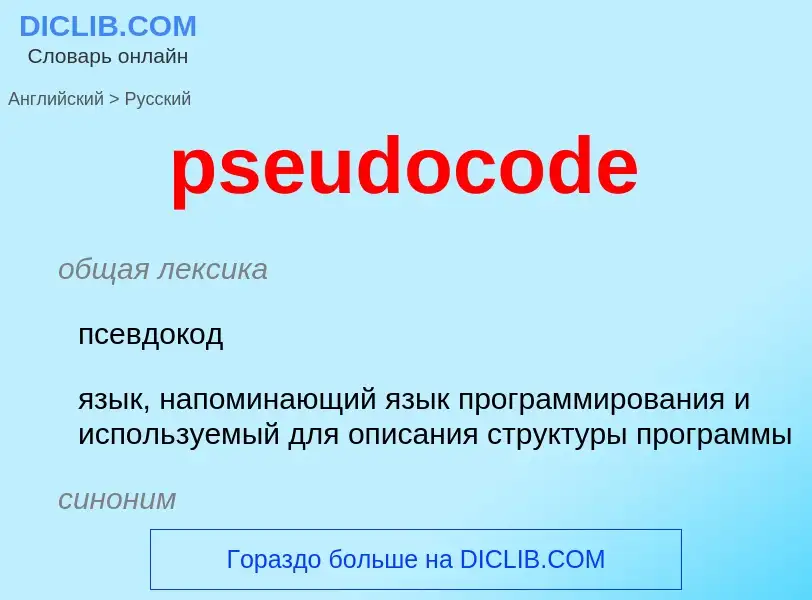Vertaling en analyse van woorden door kunstmatige intelligentie ChatGPT
Op deze pagina kunt u een gedetailleerde analyse krijgen van een woord of zin, geproduceerd met behulp van de beste kunstmatige intelligentietechnologie tot nu toe:
- hoe het woord wordt gebruikt
- gebruiksfrequentie
- het wordt vaker gebruikt in mondelinge of schriftelijke toespraken
- opties voor woordvertaling
- Gebruiksvoorbeelden (meerdere zinnen met vertaling)
- etymologie
pseudocode - vertaling naar russisch
общая лексика
псевдокод
язык, напоминающий язык программирования и используемый для описания структуры программы
синоним
Смотрите также
общая лексика
символический код
Definitie
Wikipedia
In computer science, pseudocode is a plain language description of the steps in an algorithm or another system. Pseudocode often uses structural conventions of a normal programming language, but is intended for human reading rather than machine reading. It typically omits details that are essential for machine understanding of the algorithm, such as variable declarations and language-specific code. The programming language is augmented with natural language description details, where convenient, or with compact mathematical notation. The purpose of using pseudocode is that it is easier for people to understand than conventional programming language code, and that it is an efficient and environment-independent description of the key principles of an algorithm. It is commonly used in textbooks and scientific publications to document algorithms and in planning of software and other algorithms.
No broad standard for pseudocode syntax exists, as a program in pseudocode is not an executable program; however, certain limited standards exist (such as for academic assessment). Pseudocode resembles skeleton programs, which can be compiled without errors. Flowcharts, drakon-charts and Unified Modelling Language (UML) charts can be thought of as a graphical alternative to pseudocode, but need more space on paper. Languages such as HAGGIS bridge the gap between pseudocode and code written in programming languages.

